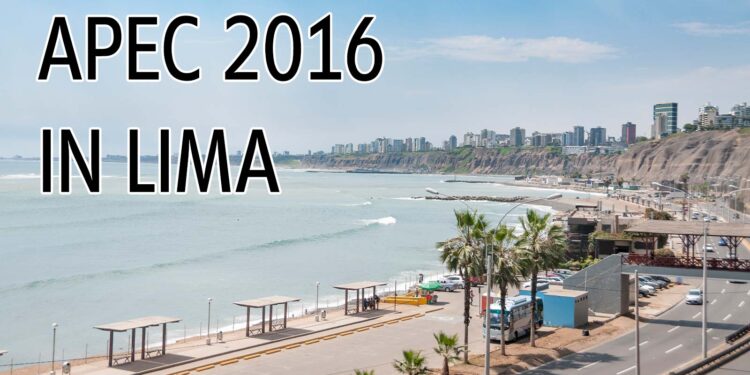APEC 2016 Peru – Taking Place in Lima

Asia-Pacific Economic Cooperation (APEC) Peru 2016, the Economic Leader’s Meeting, runs November 17-19 this year in Lima with the theme being “Quality Growth and Human Development.” As this event will significantly increase general aviation (GA) traffic to the region additional pre-trip and day of operation planning should be considered.
The following is an overview of what you need to know:
1. Primary airport
Lima (SPJC) is the primary airport for this event and the only 24-hour airport of entry (AOE) for Lima. This location offers full GA support and ground handling, as well as customs, immigration, and quarantine (CIQ) clearance services, 24 hours a day. While SPJC normally does not have any operating restrictions or curfews, the airport only has five parking spots. Also, Presidential and accompanying aircraft will be parked on the military side of this airport.
2. Alternate airport
If there are parking issues at SPJC, aircraft will need to travel to Pisco (SPSO), the closest civilian AOE to SPJC, at about 133 NM away. This is a 24-hour location with no airport slot or prior permission requirements (PPRs). However, note that this airport has limited parking. Additionally, the only service available at this time is fuel, as the airport has yet to be certified by the government for ramp services such as lav and water, and towing.
3. Parking restrictions
Although the official period of this event is Nov 17-19 parking restrictions, as published by NOTAMs A34004/16 and A34004/10, will be in place November 14-21 for SPJC.
4. Landing permits
Peru mandates landing permits for all aircraft traveling to the country and these are processed by the Civil Aviation Authority (CAA). Official permit lead time is five business days but if you make permit application during week days it may be approved within 24 hours, at CAA’s discretion. Note that CAA operates Monday-Friday 0900-1200 and 1400-1700 local and they will not process permits outside of these hours. Required documentation for landing permits includes certificates of registration and airworthiness, worldwide insurance and crew licenses (both sides). Be mindful that during the APEC event it’s possible that an official invitation letter may be required for permit processing purposes, although nothing has been announced at this time.
5. Airport slots and PPRs
SPJC normally does not require either airport slots or prior permission required (PPR). We do not expect this to change over the APEC Peru 2016 period.
6. CIQ clearance
All GA passengers and crew arriving at SPJC clear customs, immigration, and quarantine (CIQ) within the main terminal. While this process normally takes 10-15 minutes it may take a little longer, perhaps 20 minutes, during the APEC period. Note that there is no separate clearance line available for either GA crew or passengers. After passing through immigration, passengers/crew will go through customs and have all baggage scanned by x-ray. Manual baggage inspection is also conducted in some cases.
7. Passport and visa requirements
All arriving passengers and crew require passports and it’s best for these to have remaining validity of at least six months. Crew, listed on the gendec, do not require visas for Peru. Passengers, depending upon nationality, may require visas. If visas are required for passengers they must be obtained prior to arrival. Visas on arrival in Peru are very seldom possible. Passengers arriving without required visas may be immediately deported.
8. Hotel considerations
At this time most 4- and 5-star hotels in Lima are sold out over the duration of the APEC meeting period. If you are able to obtain preferred hotel accommodations be aware that these may be non-refundable. For crew accommodations your local ground handler may be able to offer creative solutions, but it’s likely you may end up at hotels at least a one hour drive from the city center.
9. Local transport
For local crew transport in the Lima area, prepaid (car with driver) options are suggested. We recommend avoiding local public taxis while in the country. Keep in mind that demand for local transport services will be very high during this period and it will be best to confirm arrangements as early as possible.
10. In-flight catering options
For in-flight catering requests during the APEC period a minimum of 24 hours notice is needed and 48 hours notice is recommended, particularly if you’re requesting any special or out of the norm items. For those desiring catering on short notice it would be best to cater directly from a hotel or restaurant rather than to use an in-flight caterer.
Conclusion
For operation to APEC Peru 2016 it’s important to begin working with your trip support provider and local ground handler as soon as schedule is known, in order to request permits, confirm parking and coordinate all required support services.
Questions?
If you have any questions or would like assistance planning your next trip to Peru, contact me at earnestrocha@univ-wea.com.




